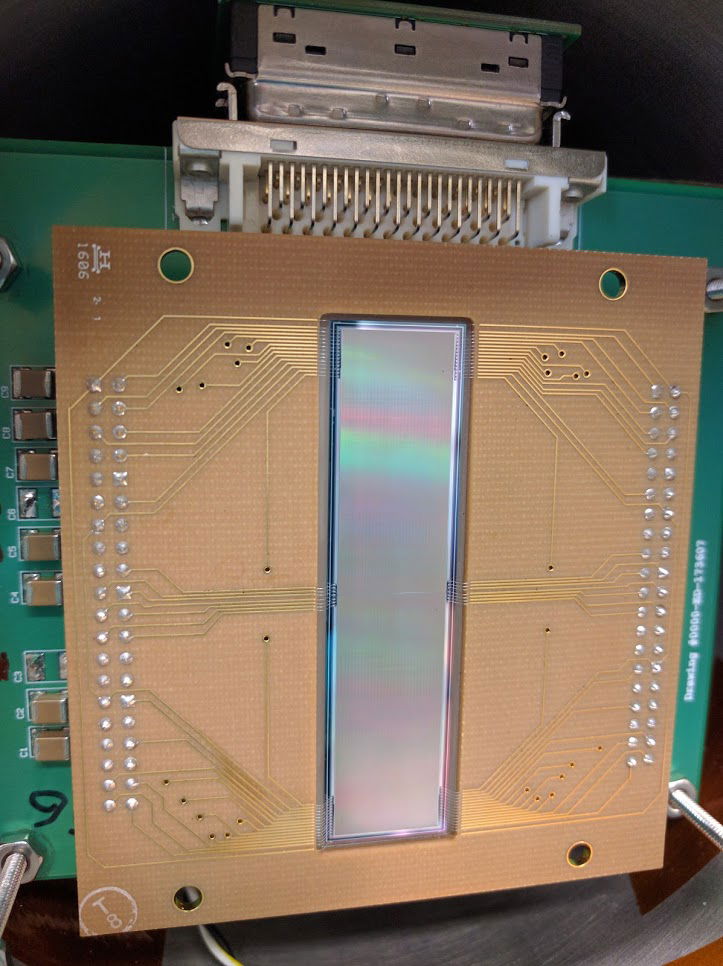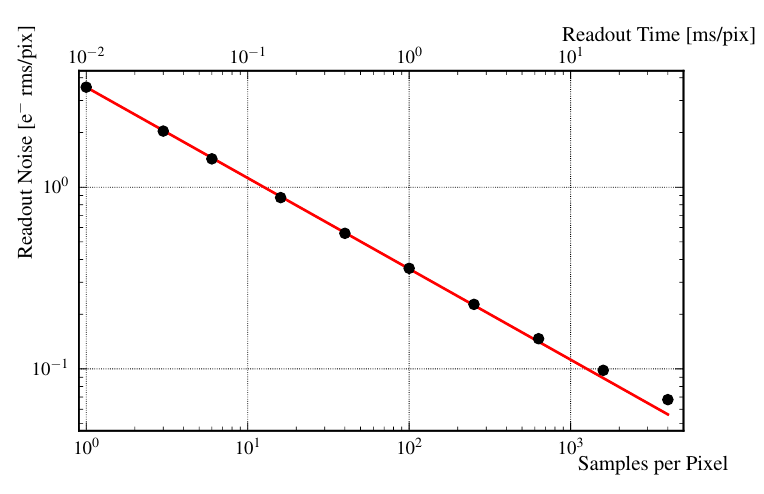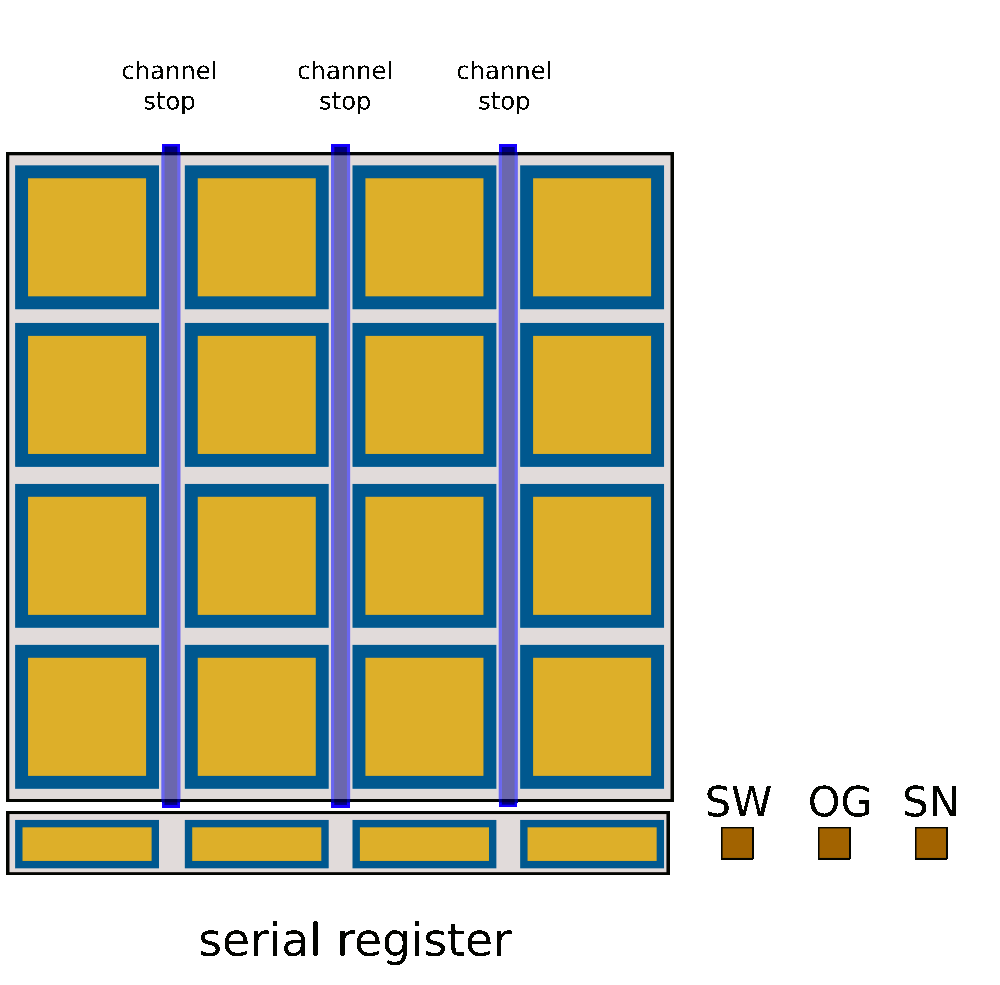Skipper-CCD

Technical description
Skipper-CCDs are able to achieve an readout noise as low as fraction of electrons. These detectors are developed by the MicroSystem Labs of Lawrence Berkeley National Laboratory and operated at Fermilab. They open an unique opportunity to detect neutrino interactions, that transfer a very small quantity of energy to the Skipper-CCD silicon. A part of the transferred energy is converted in a very small amount of electron-holes pairs that can be easily counted with a Skipper-CCD.
Learn More
Performance
Measured readout noise as a function of the number of non-destructive readout samples per pixel for the Skipper CCD. Black points show the standard deviation of the empty pixels distribution as a function of the number of averaged samples. The red line is the theoretical expectation assuming independent, uncorrelated samples. The number of readout samples can be dynamically con figured.
Learn More
Reading
Here you can find an animation describing how a Skipper-CCD reads the charge in each pixel. In the last step, when the charge is placed at the sense nose (SN), it can be measured repeatedly in a non-destructive way
Learn More
Low Threshold Acquisition
Extensive use of the Skipper technology was limited by the lack of specific equipment intrinsically designed to operate the sensor at the ultimate performance. The Low Threshold Acquisition controller, so called LTA, was developed by research groups in the USA and Argentina to tackle this problem. Those groups are now part of vIOLETA collaboration.
Learn More